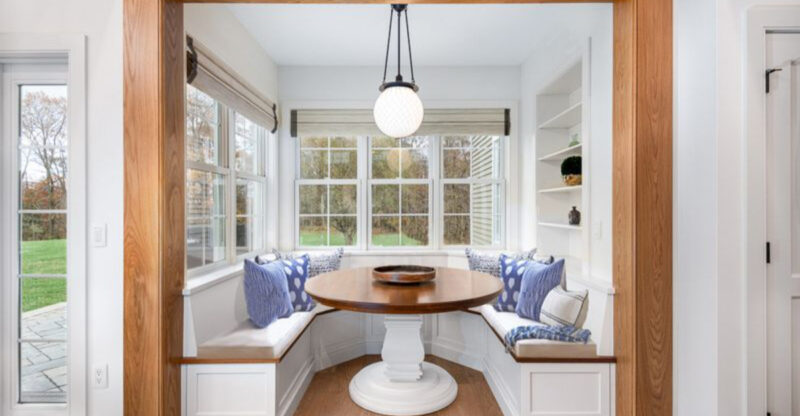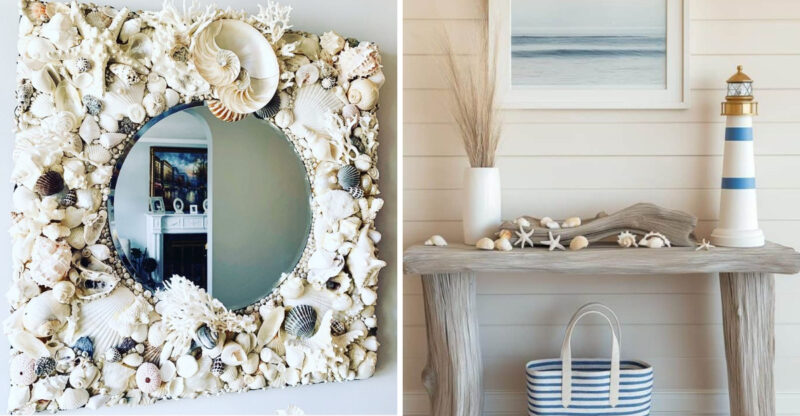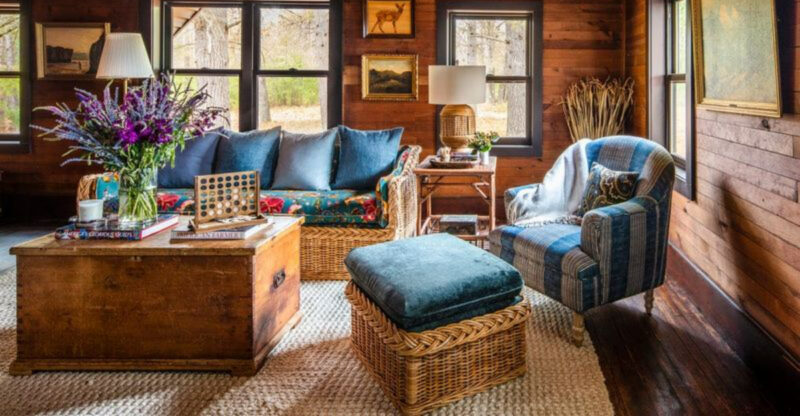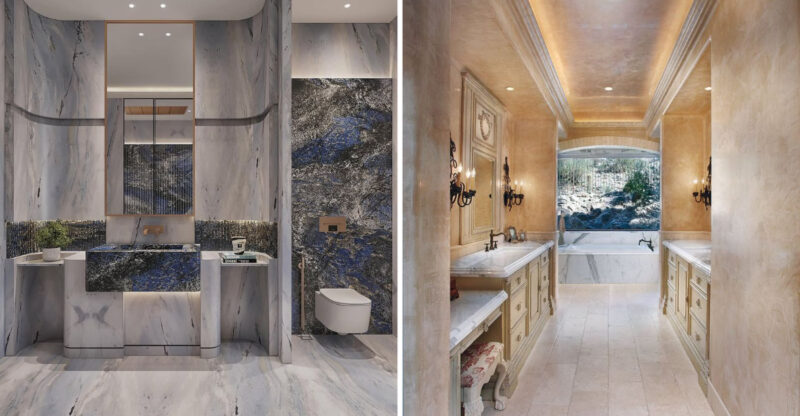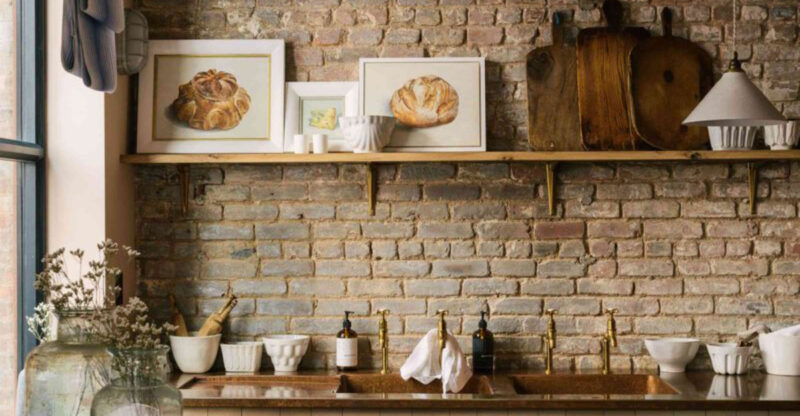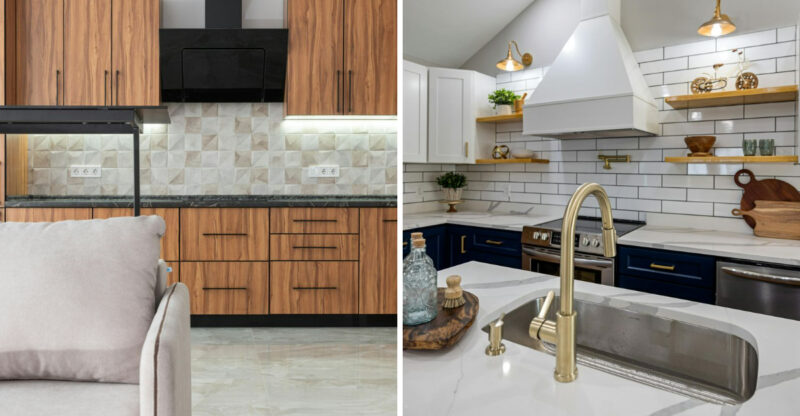8 Massachusetts Bathrooms Designers Say Perfect the Subtle Quiet Luxury Trend
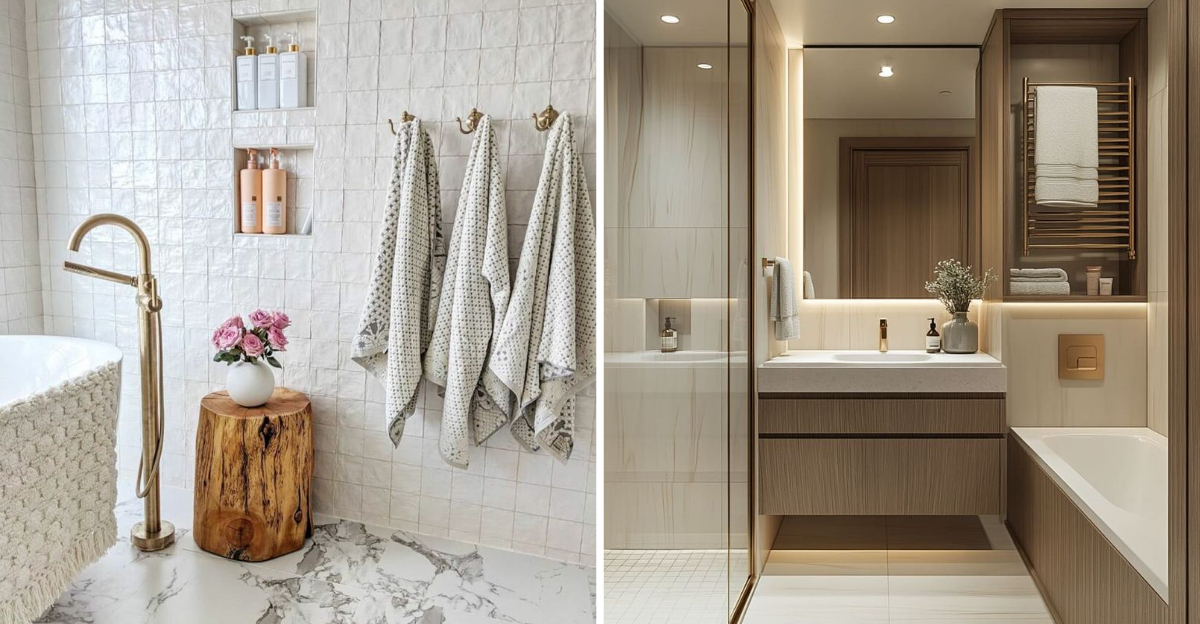
Massachusetts homeowners are embracing the quiet luxury trend in bathroom design. This style focuses on understated elegance rather than flashy displays of wealth.
Local designers have identified key elements that create these sophisticated spaces without shouting for attention. Let’s explore eight features that Massachusetts designers recommend for achieving this refined bathroom aesthetic.
1. Marble Countertops
Natural marble transforms ordinary bathrooms into sanctuaries of elegance. Massachusetts designers particularly favor Carrara and Calacatta varieties with their subtle gray veining against creamy backgrounds. The cool, smooth surface creates an instant feeling of luxury without being ostentatious.
When selecting marble for countertops, thickness matters tremendously. Designers recommend 1.5-inch thick slabs for a substantial, high-end appearance. Many Boston-area homeowners opt for waterfall edges where the marble cascades down the cabinet sides.
Maintenance concerns? Modern sealants have made marble much more practical for everyday use. Pairing marble countertops with simple cabinetry underneath keeps the focus on the stone’s natural beauty while embodying the quiet luxury approach perfectly.
2. Freestanding Tubs
Freestanding tubs have become the crown jewel in Massachusetts luxury bathrooms. Cape Cod designers particularly favor egg-shaped or slipper styles in matte white finishes that create a sculptural focal point without overwhelming the space.
Did you know these tubs aren’t just beautiful but functional too? Their deeper, more ergonomic designs allow for full-body soaking that rivals spa experiences. Homeowners in Beacon Hill and Back Bay often position these statement pieces beneath windows or skylights, creating a bathing experience that connects with nature.
For maximum impact, designers recommend keeping the surrounding area simple perhaps a small wooden stool for bath essentials and plenty of breathing room. This approach embodies quiet luxury by focusing on quality experience rather than cluttered opulence.
3. Muted Wall Colors
Soft, muted wall colors create the perfect backdrop for quiet luxury bathrooms across Massachusetts. Nantucket designers gravitate toward pale grays, soft blues, and warm taupes that evoke the region’s coastal atmosphere without resorting to obvious beach themes.
These understated hues work brilliantly because they create depth and interest while remaining timeless. Many homeowners choose to carry the same color onto the ceiling, creating a cocooning effect that feels both intimate and expansive.
It’s worth considering paint with slight sheen in bathrooms Massachusetts designers often select eggshell or satin finishes that subtly reflect light. This tiny detail makes the space feel more luminous and expensive without drawing attention to itself, perfectly aligning with the quiet luxury philosophy.
4. Brass Fixtures
Unlacquered brass fixtures add warmth and character to Massachusetts luxury bathrooms. Designers in historic areas like Concord and Lexington particularly appreciate how these elements develop a living patina over time, telling a story through gentle aging rather than remaining perpetually perfect.
The key to incorporating brass successfully lies in choosing architectural shapes with clean lines. Cross-handles, bridge faucets, and simple shower controls offer functionality without fussiness. Many Massachusetts homeowners pair brass fixtures with contrasting elements perhaps matte black shower frames or nickel cabinet hardware.
If you’re hesitant about full brass commitment, start small with towel bars or lighting. Even these modest touches can elevate a bathroom’s luxury quotient significantly. Remember that in quiet luxury, it’s these thoughtful details rather than grand gestures that create sophisticated impact.
5. Floating Vanities
Floating vanities have captured the imagination of Massachusetts bathroom designers seeking to create airy, sophisticated spaces. Wall-mounted cabinets that appear to defy gravity offer both visual lightness and practical benefits making smaller bathrooms feel more spacious while simplifying floor cleaning.
Cambridge designers often recommend warm wood finishes like walnut or oak that introduce natural texture against cooler bathroom elements. The space beneath these floating pieces creates useful shadow lines that add architectural interest without requiring additional decorative elements.
How do these vanities stay functional? Smart internal organization becomes crucial with floating designs. Massachusetts homeowners incorporate drawer dividers, electrical outlets inside drawers for hairdryers, and specialized storage for everyday essentials. This thoughtful organization embodies quiet luxury’s focus on experience over ostentation.
6. Soft Lighting
Layered, soft lighting creates atmosphere in Massachusetts’ most luxurious bathrooms. Designers from Boston’s upscale neighborhoods favor recessed ceiling fixtures with warm temperature bulbs as a base layer, supplemented by sconces that cast flattering light at face level.
Thoughtful placement matters tremendously. Lighting under floating vanities creates a gentle glow that makes the cabinet appear to float more dramatically at night. Many Massachusetts bathrooms now incorporate programmable systems that transition from energizing morning brightness to relaxing evening ambiance with a single touch.
Though often overlooked, designers insist proper lighting is worth the investment. The difference between harsh overhead lighting and a thoughtfully designed lighting plan can transform an ordinary bathroom into a sanctuary. This attention to how a space feels rather than just how it looks perfectly captures the quiet luxury approach.
7. Textured Tiles
Textured tiles add subtle depth to Massachusetts luxury bathrooms without overwhelming the senses. Designers working in coastal areas like Martha’s Vineyard often select handmade zellige tiles whose slight irregularities catch light differently throughout the day, creating visual interest that rewards close attention.
Where do these tiles work best? Many designers recommend focusing textured tiles in shower enclosures or as backsplashes, while keeping floor tiles simpler for balance. The contrast between smooth and textured surfaces creates tactile richness that elevates the entire space.
Monochromatic color schemes allow texture to take center stage. White textured tiles against white walls might seem minimal at first glance, but the play of light and shadow creates remarkable depth. This sophisticated approach exemplifies quiet luxury’s focus on quality and subtlety rather than bold statements or trendy patterns.
8. Minimalist Accessories
Carefully curated accessories complete Massachusetts’ most elegant bathrooms. Designers in affluent communities like Wellesley and Winchester advocate for fewer, better pieces rather than cluttered countertops. Think handcrafted soap dispensers, natural sea sponges, and perhaps a single architectural plant.
Materials make all the difference in these understated elements. Stone soap dishes, wooden trays, and mouth-blown glass containers offer texture and interest without resorting to obvious luxury signifiers. Many Massachusetts homeowners display family heirlooms like vintage perfume bottles or antique silver trays that tell personal stories.
Storage solutions become crucial with minimalist styling. Designers recommend incorporating medicine cabinets or closed storage to keep everyday necessities hidden from view. This thoughtful organization allows the few displayed items to shine while maintaining the serene, uncluttered atmosphere that defines quiet luxury bathrooms.

